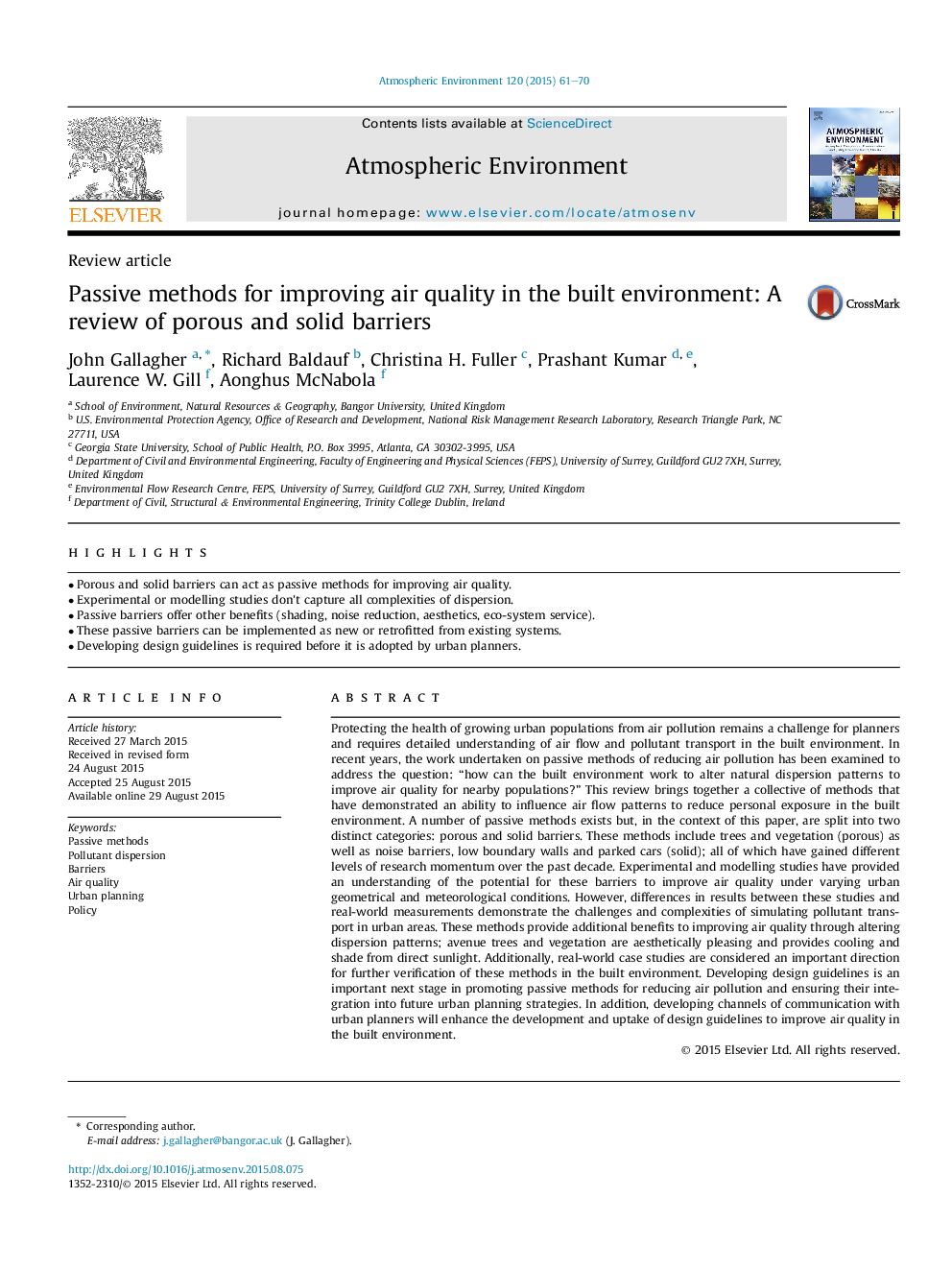| کد مقاله | کد نشریه | سال انتشار | مقاله انگلیسی | نسخه تمام متن |
|---|---|---|---|---|
| 6337291 | 1620351 | 2015 | 10 صفحه PDF | دانلود رایگان |
- Porous and solid barriers can act as passive methods for improving air quality.
- Experimental or modelling studies don't capture all complexities of dispersion.
- Passive barriers offer other benefits (shading, noise reduction, aesthetics, eco-system service).
- These passive barriers can be implemented as new or retrofitted from existing systems.
- Developing design guidelines is required before it is adopted by urban planners.
Protecting the health of growing urban populations from air pollution remains a challenge for planners and requires detailed understanding of air flow and pollutant transport in the built environment. In recent years, the work undertaken on passive methods of reducing air pollution has been examined to address the question: “how can the built environment work to alter natural dispersion patterns to improve air quality for nearby populations?” This review brings together a collective of methods that have demonstrated an ability to influence air flow patterns to reduce personal exposure in the built environment. A number of passive methods exists but, in the context of this paper, are split into two distinct categories: porous and solid barriers. These methods include trees and vegetation (porous) as well as noise barriers, low boundary walls and parked cars (solid); all of which have gained different levels of research momentum over the past decade. Experimental and modelling studies have provided an understanding of the potential for these barriers to improve air quality under varying urban geometrical and meteorological conditions. However, differences in results between these studies and real-world measurements demonstrate the challenges and complexities of simulating pollutant transport in urban areas. These methods provide additional benefits to improving air quality through altering dispersion patterns; avenue trees and vegetation are aesthetically pleasing and provides cooling and shade from direct sunlight. Additionally, real-world case studies are considered an important direction for further verification of these methods in the built environment. Developing design guidelines is an important next stage in promoting passive methods for reducing air pollution and ensuring their integration into future urban planning strategies. In addition, developing channels of communication with urban planners will enhance the development and uptake of design guidelines to improve air quality in the built environment.
Journal: Atmospheric Environment - Volume 120, November 2015, Pages 61-70
